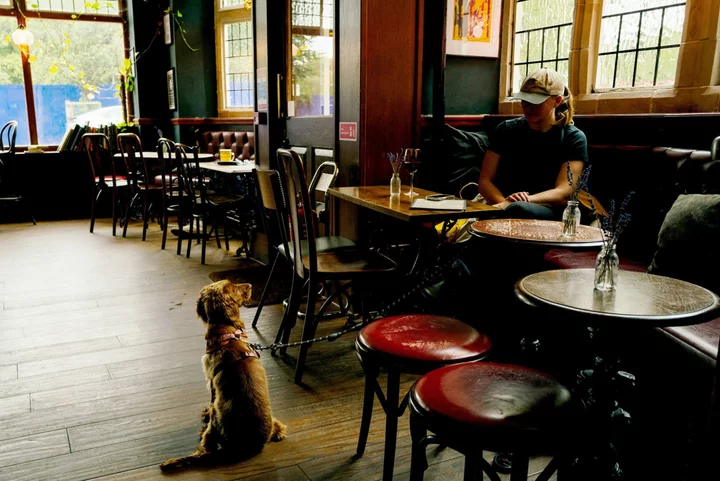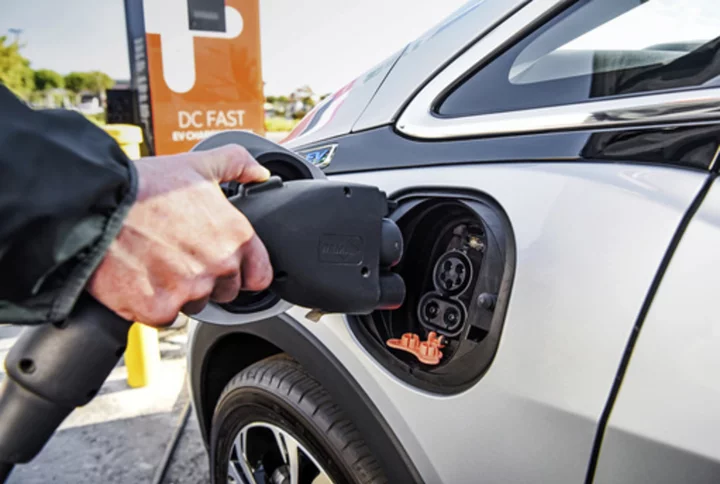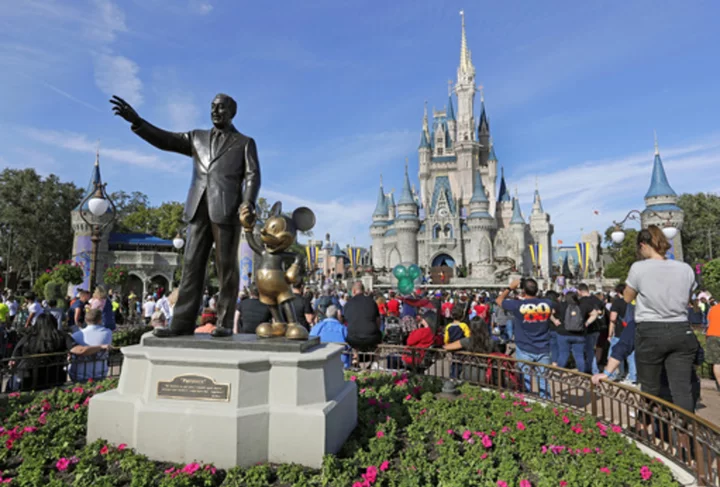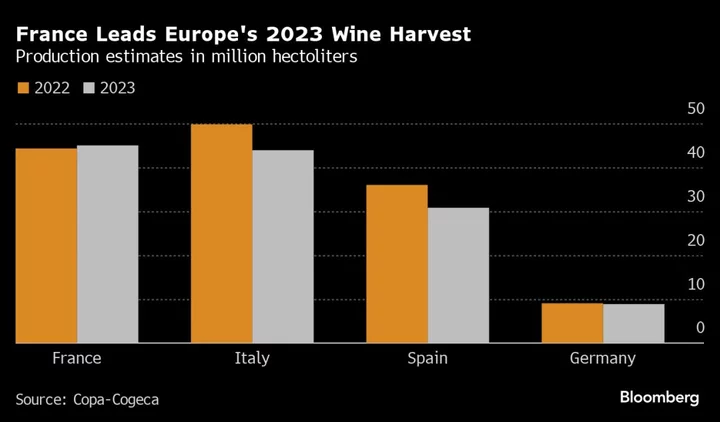When the Crown and Anchor pub in Llanidloes in mid-Wales was built, there was a different Charles on the throne, America was a British colony and France still had a king.
While time changed all around it, the Crown and Anchor has stayed much the same since the 17th century. But that long spell of history ended abruptly in May, when a Covid-19 hangover, rising prices and high energy costs meant that landlord John Fitzpatrick was forced to call last orders.
The final straw was changing customer habits: Locals had stopped coming out for drinks. While his pub was stalling, Fitzpatrick noticed that a nearby spot was booming: The beer shop next door had sales that “were up year on year,” he says. “Drinking habits and going out changed in lockdown—people got used to staying in.”
The Crown and Anchor is just one in a long list of places that have closed over the past two decades. The number of pubs has dropped by a quarter since 2000, from 60,800 to 45,800 in 2022, according to numbers from the British Beer and Pub Association (BBPA).
And things are only getting more challenging for the battered establishments. More than 560 pubs closed in 2022—more than either 2020 or 2021, the height of the pandemic, according to the BBPA. Their figures show pubs have been hit by the energy crisis, with the average bill rising to £18,400 ($23,300) a year—a number that is often higher in older pubs with traditional fittings like single-paned windows. “They’ve had a hard four to five years where they’ve had to rely on reserves and savings just to survive and keep the doors open,” says Tom Stainer, chief executive of the Campaign for Real Ale (CAMRA).
Among the pubs that have closed are several of the country’s most historic: The Air Balloon in Gloucestershire, open since at least the 1780s, closed last year; the 200-year-old Black Horse in Coventry was demolished in January. And in early August, the 18th century Crooked House near Birmingham was “unacceptably” demolished after a suspicious fire.
With each time-honored spot that’s shuttered, another little piece of British history is lost, warns Paul Ainsworth, chair of the pub heritage group within CAMRA. “They’re period pieces, they should be a reminder of how places were at that time,” he says. “We consider them part of the nation’s heritage.”
The Mutating Pub
Describing the function of a pub to a non-Brit is difficult. It has beer, but isn’t a bar; it serves food, but isn’t a restaurant; it hosts guests overnight, but isn’t a hotel. Some have live music, many have games, others brew their own beer. You can drink there all night and bring your children and dogs, too. If their role can be summarized at all, it’s as a community center—the “third place” people go to outside of work and home.
“I grew up on a farm on the countryside, and the pub was like the village living room,” says Ben Dewfield-Oakley, conservation officer at Save Britain’s Heritage.
They also distinctly mark periods in British history, says CAMRA’s Ainsworth. High Victorian pubs built with wealth from new industry are ornate in style: The Philharmonic in Liverpool has mosaic floors, marble urinals and wood-paneled walls. The art deco pubs built in the 1930s, like the Test Match Hotel outside Nottingham, had more spacious rooms and gardens to appeal to families and discourage louche behavior. The most recent recognized style is the estate pub—spots with simple interiors built for new housing estates in the austere postwar era.
Pubs continue to change to reflect new facts about British society, says Dr. David Knight, an architect and co-editor of Public House, a history of London pubs. Pubs “are simultaneously deeply embedded in the structure of British society, but they’re also capable of great change and innovation,” he says.
- If you’re a fan of whiskey, wine, beer and spirits, Bloomberg Pursuits Top Shelf Society is a club just for you. We’re sharing exclusive spirits news, building a tasting community and offering access to special cocktail events and releases all in a monthly newsletter.
“Even in places where you'd imagine the pub might disappear—like in places where different religions or demographics are in larger numbers—they don't disappear, they mutate into different things,” Knight continues. For example, the desi pubs in northern England and west London that have responded to their changing communities by combining tandoori cooking with draught ale.
The Pricey Pint
Pubs are also battling longer-term issues, like scheduling demands. Once the place people went to spend their free time, pubs have fallen down on the British consumer’s destinations list. According to research by PwC, fewer than a quarter of around 2,000 respondents said that going to pubs and bars was one of their top five activities, ranking behind the gym, streaming videos and cafe visits.
Taxes have also made a trip to the pub pricier than drinking and eating at home. Food from the supermarket isn’t subject to VAT, while meals at the pub come with 20% added tax—a disparity that Wetherspoon has said allows them to subsidize beer to keep it lower in price. Twice as much alcohol is now bought in shops and supermarkets than in pubs, clubs and restaurants, according to the BBPA. “The taxation issues mean it's very expensive to drink beer in the pub so people stay at home,” says CAMRA’s Stainer.
Add to that that younger people are less inclined to reach for a pint, and nesting-at-home habits, exacerbated by the pandemic, have stuck around. “When we were younger the pub was where we went,” Stainer notes. Now, “if you’re young on a low income, dreaming of owning a house, then I don’t know if you'll be able to go and drink two or three pints with your friends.”
The so-called “Brexit pubs guarantee” announced by Chancellor Jeremy Hunt in the Spring Budget, which froze alcohol duty on draught beer, is a “step in the right direction,” Stainer adds. But it won’t affect other drinks bought in pubs.
Developer Appeal
The things that make pub buildings appeal to customers likewise make them appeal to developers. “One problem with historic pubs is they tend to occupy attractive buildings,” says Ainsworth. “They are very attractive to developers who are looking for change of use: They think it would make a lovely house.”
Pubs with particularly important architecture are Grade I- or Grade II-listed by Historic England, limiting the amount that they can be changed structurally. But that doesn’t stop a landlord from converting the building’s use. A few notable pubs have been stripped internally to make way for supermarkets or flats.
One reason historic pubs are under threat is that relatively little legislation protects them. While Belgian beer culture and French gastronomy are included on UNESCO’s intangible cultural heritage list, pubs, which are arguably just as important historically and socially, get no help as the UK never signed up to the scheme, which highlights the importance of unique national traditions.
Thus many historic places are knocked down to make way for new developments, says Dewfield-Oakley. “We’re getting a perceptible increase in applications to demolish pubs that have closed,” he says. “The Plough in Sheffield, next to the oldest football club in the world where they laid down the rules [of the sport], got demolished by a housing developer. … It’s clearly of value and should be reused, but there’s a perception that old buildings are difficult to reuse.”
The Campaign for Pubs is working to rectify the situation. The group is lobbying for a change in planning laws for pubs built before 1975 that would require developers to seek buyers who would keep the place running, before demolition or use change.
New Solutions
There are a few bright spots on the historic pub landscape. In the miraculous case of the Carlton Tavern in Maida Vale, north London, the place was rebuilt brick by brick after developers knocked it down without permission. More than 150 have been saved from closing down because of community groups stepping in to purchase them, according to CAMRA.
Exhibit A, the George and Dragon in Hudswell, North Yorkshire, had served customers for two centuries when it closed in 2008. It has since been bought by the community, and its role as the center of the village has only grown since then. Alongside pints it now also offers a library, shop, allotments and free Wi-Fi. It has hosted Prime Minister Rishi Sunak, and King Charles when he was the Prince of Wales.
Such new solutions are vital to ensure more pubs don’t go the same way as his Crown and Anchor, says Ainsworth. Historic pubs are “part of British society,” and yet “they’re dying all over the place.” He adds: “If you take the pubs away, you take the beating heart of the town away.”
Author: Helen Chandler-Wilde









